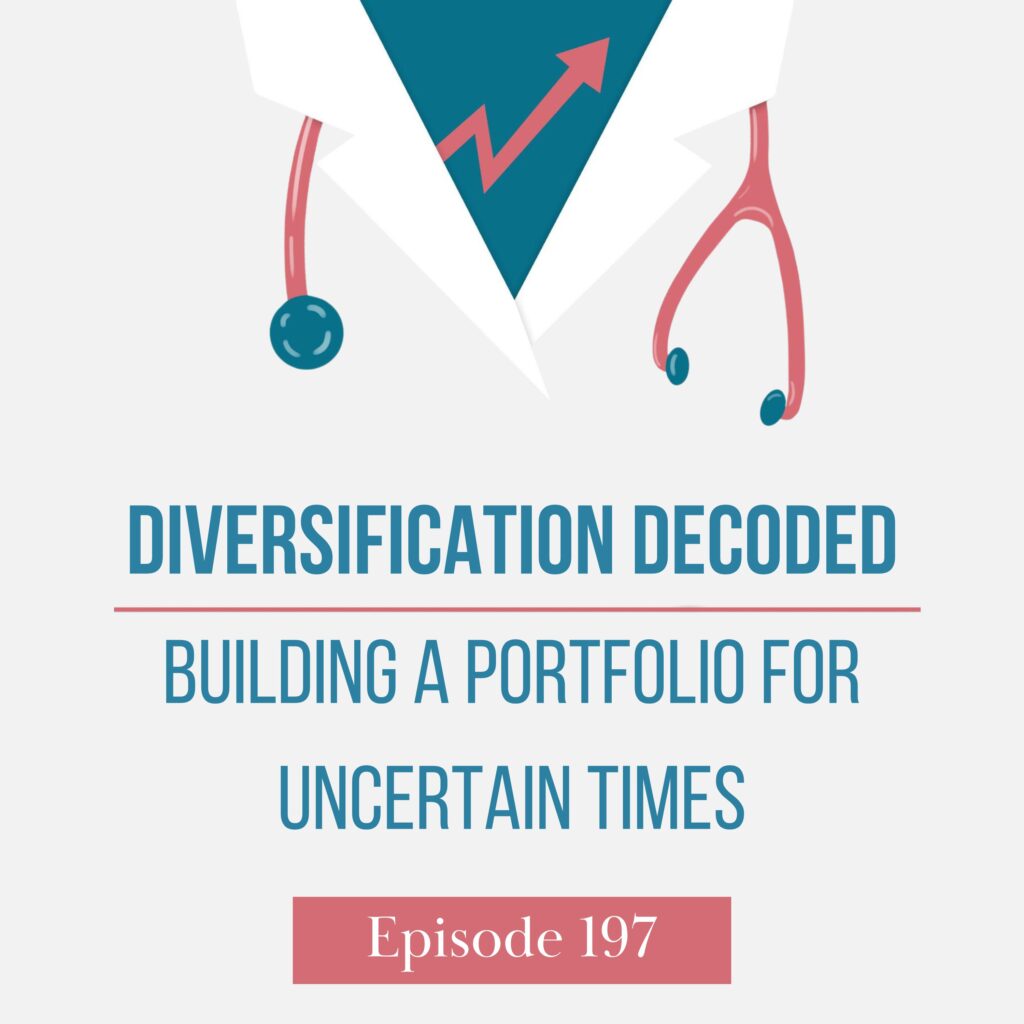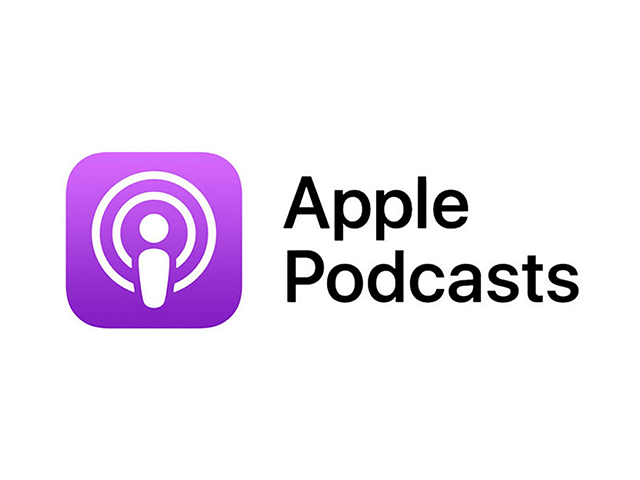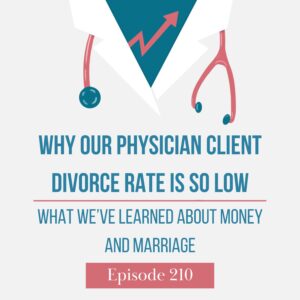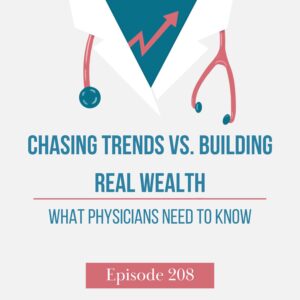Is diversification overrated or more important than ever in today’s market?
In this episode, I’m joined by Jackie Griggs to explain what diversification really means and why it matters now more than ever for physicians managing their own portfolios.
Listen in as we break down how mean reversion impacts market cycles and why concentrating on the S&P 500 or individual stocks (like Apple) could leave you exposed to more risk than you think.
You’ll hear practical tips for building a resilient investment strategy that aligns with your long-term financial goals.
—————————————————————————————————————————
- Callan Periodic Table of Investment Returns
- Vanguard Real Estate Index Fund
- SPDR S&P 600 SmallCap Value ETF (SLYV)
- Connect with me on my LinkedIn
- Contact Finance for Physicians
- Finance for Physicians
- To schedule a call with one of our awesome planners, book HERE.
Full Episode Transcript:
Jackie Griggs: After a certain amount of time of outperformance, generally the historical trend is that those things will revert back to whatever their mean performance over the long, long term has been. So we wanna be a little bit careful about just saying, “Oh, S&P 500 has done fantastic. That’s where I’m gonna put all my money,” and just assume it’s going to continue that way forever.
Because eventually there will be that reversion, and things will have to decrease back down to a more historical trend level.
Welcome to Finance for Physicians, the show where we help physicians like you use money as a tool to live a great life. I’m your host, Daniel Wrenne, and I’ve spent the last decade advising physicians on their personal finances with the mission to help them understand that taking control of their finances now means creating a future where they can practice medicine where, when, and how long they want to.
Daniel Wrenne: Jackie, how’s it going?
Jackie Griggs: Hey, Daniel. It’s good to be back.
Daniel Wrenne: Yeah. You excited to talk about diversification?
Jackie Griggs: I am excited. It’s been a timely topic.
Daniel Wrenne: Everybody loves diversification. Market’s a little rocky right now.
Jackie Griggs: A little bit.
Daniel Wrenne: I guess good time to be considering or thinking about diversification.
Jackie Griggs: It is. Yeah. Absolutely.
Daniel Wrenne: Yeah. I thought maybe we could take a little bit of a step back. Jackie’s been actually studying about—well, not really studying diversification—but studying for a big kind of investment-related tests. So she’s been in the thick of all this type of stuff lately.
Jackie Griggs: Yeah, definitely in the thick of it, in the weeds. Gotta be true to myself as the investment nerd here.
Daniel Wrenne: Yeah, she’s studying for the CFA, which is a very difficult, it’s a particularly difficult exam in our industry. It’s got three tests.
She’s about to take the second one. Wish her luck if you’re hearing this. It’s in a month, right?
Jackie Griggs: Yes. Uh-huh. It’s getting very real now.
Daniel Wrenne: You won’t know in a month, will you? You’ll know in two months, maybe?
Jackie Griggs: Yeah. It’ll be probably another six to eight weeks after that.
Daniel Wrenne: Yep. So we’re gonna talk about diversification.
I’m thankful that we were able to pull her away from studying from the CFA to talk a little diversification.
Jackie Griggs: Well, happy to be here. It’s good to have a little break.
Daniel Wrenne: Yep. Okay. Maybe we could start out with a little bit of a explanation. So what exactly is diversification?
Jackie Griggs: That’s a good question, and it’s a term I feel like that gets thrown around a lot in our industry.
So I’m sure many of our clients or our listeners here at the podcast have heard that term before, but something that not everyone understands what that jargon actually means. So at its most basic level, it’s about having different types of investments—be that different asset classes or different industries within our overall portfolio, and these different asset classes and investments all perform slightly differently.
So our stocks may perform differently than our bonds. They each have their own different strengths and weaknesses, so to speak, economically speaking. And even within those categories, we’ll have things like junk bonds that might perform very differently from a government bond or a large-cap stock that may perform differently from a small-cap value stock.
So within our portfolio as a whole, we want these different asset classes and different investments that don’t all perform the same because that way when there are. Things that cause volatility, either in the economy or in the stock market, we don’t have a portfolio that is perfectly reactive to what is happening.
We have things that kind of help balance out some of that volatility, smooth out those highs and lows by having those different investments.
Daniel Wrenne: Yeah, so the opposite of diversification would be concentration, I would say.
Jackie Griggs: Yeah. And then especially if we wanted to get into concentration with leverage.
Daniel Wrenne: Yeah.
Jackie Griggs: But we’re not gonna do that. We don’t do that.
Daniel Wrenne: Yeah. So concentration, maybe we could look at some specific examples of each. So what would be an example of from an investing standpoint of an extremely concentrated strategy, like the most concentrated I could possibly get?
Jackie Griggs: Most concentrated you could possibly get?
Probably, I mean investing in just a single security, not even an index, like a large cap stock or S&P 500 or things like that. But instead actually putting all of your chips on one color here, just investing in one single company, even more so if you applied leverage, but without even getting into that. That would probably be the highest potential for volatility because that investment would be extremely reactive to things that are happening that relate to that company.
And so your portfolio would be subjected to extreme potential highs and lows and swings based on what’s happening there.
Daniel Wrenne: So if I buy even more, let’s say I work at Apple. I work at Apple, and I buy 100% of my investments go into Apple stock, right? It’s ultra concentrated because, I mean Apple’s a big company.
It might even be a better example if we use like a small company, although any company can go bankrupt or tank.
Jackie Griggs: Apple’s a good example too because it’s in a lot of the larger indexes in a significant portion. And you would be earning your income from there. So there’s a risk to your personal cash flow as well as in your example, if you are also investing your money into that. You’re highly, highly concentrated. And then throw in, you’re getting some type of employee stock option there as well, potentially.
Daniel Wrenne: Hyper concentrated right there.
Jackie Griggs: Hyper apple.
Daniel Wrenne: Right. So the problem with that is like you are very dependent on, you got all your eggs in one basket. So you’re extremely dependent on Apple. And so if—
Jackie Griggs: All your apples in one basket.
Daniel Wrenne: All your apples in one basket. Yes, perfect. You have all your apples in one basket with Apple, and if Apple has a bad run for the next 20 years before your retirement, you could be toast because of it, or even worse, it just goes belly up and it’s a problem.
So that’s an extreme example. There’s also maybe we could give an example of a little bit more, maybe concentrated but not ultra concentrated like. Let’s say in the middle of maybe not ultra diversified, what would be an example? More in the middle?
Jackie Griggs: Let’s say you’re investing only in the S&P 500.
It’s still market-weighted toward more of our large-cap tech stocks, but it’s not entirely concentrated in Apple, specifically. So that’s I think, a little bit more of a middle ground. And I think a relatively common issue that we tend to see of people who may have been managing their portfolio on their own is they look back and they see, “Oh, S&P 500 has done great the past decade,” and they put all their money into that.
And so that is slightly more diversified than the Apple example because we do have other things in that index, but we are concentrated still largely in the same industry, in the same asset class, a lot of similar types of companies there. So still a risk, still a lot more that you could do from a diversification standpoint there, because I think what you would tend to see in, say, the S&P 500 example here, is a lot of those different pieces of the index will be highly correlated because they are so similar. So we might still have—
Daniel Wrenne: Correlation. We’re going with some other lingo. That’s a good one.
Jackie Griggs: Sorry, what was that?
Daniel Wrenne: What we gotta define the lingo. What is correlation mean?
Jackie Griggs: Yeah, that’s a good question. So the correlation is the extent to which we have stocks that move in the same direction as one another, or a stock that moves in the same direction of the index, but just that they’re moving together.
So if we were perfectly, positively correlated, it would mean that if Apple goes up 1%, Microsoft’s gonna go up 1%. Whereas if we were perfectly negatively correlated, Apple goes up 1%, Microsoft goes down 1%. So are they moving in tandem in the same direction or opposite directions or somewhere in the middle?
And so if we are entirely invested in one index, like the S&P 500 example, a lot of those stocks are going to be relatively similar, be pretty similarly affected by different things happening in the economy or policy-wise. And so they tend to have a pretty high correlation with one another.
And that’s where part of what we can do for additional diversification is trying to add in things to our investment portfolio that aren’t positively correlated with those other pieces or that are less positively correlated. So that if, say, there are big things happening in the economy that would send the S&P 500 or similar stocks decreasing, we would hope that we also have things in our portfolio that might increase when that happens, or at the very least not decrease as much. So that’s where correlation really comes in and is a big piece of what we’re trying to accomplish through diversification.
Daniel Wrenne: Yeah, the ultimate for diversification is having additional investments that behave differently at different times, like Jackie was saying.
If you just have a bunch of stuff that does the same thing at all times, it doesn’t add near as much diversification benefits, so you really have to look at that.
Jackie Griggs: It could provide you with some protection from company-specific risk. Again, our Apple example, if we instead have Apple and Microsoft, that’s better than just Apple because if Apple miss learnings and decreases, at least we have Microsoft.
But if we have a change to interest rates or to the economy as a whole, that’s probably going to affect both of them in pretty much the same way. So having the additional company there does diversify somewhat from that company-specific risk we had in the Apple example. But again, still just concentrated in one asset class.
It doesn’t provide very comprehensive protection to the portfolio.
Daniel Wrenne: I’ve seen a lot of concentration lately like the example you gave in the S&P 500, mainly because the past 15 years, the S&P 500 has done so well, and so it’s super tempting, I guess to go and look at your statements or the funds that you own, look ’em up online or wherever and you can see, compare them to the alternatives and you’re like, “Shoot, you guys. This S&P 500 is crushing it,” and it is crushing it the past 15 years. It’s like dominant. So it’s why would I not continue to own that? Why would I continue not to own it?
Jackie Griggs: Yeah, no, and I think that is something that we see among people that we work with a lot, or among podcast listeners a lot is, we look back at these returns and really that’s all we can do is look retroactively and look at the historical performance of what’s happened.
But we allow that to inform our current and future choices by thinking that that performance will con continue to persist. And while it might to an extent, we also have to be careful of things like mean reversion, where after a certain amount of time of outperformance, generally the historical trend is that those things will revert back to whatever their mean performance over the long, long term has been. So we wanna be a little bit careful about just saying, “Oh, S&P 500 has done fantastic. That’s where I’m gonna put all my money,” and just assume it’s going to continue that way forever. Because eventually there will be that reversion and things will have to decrease back down to a more historical trend level.
Daniel Wrenne: What’s it say on the bottom of most of those investment closures is like past performance.
Jackie Griggs: Past performance is no guarantee of future returns.
Daniel Wrenne: Right. Yeah. Beware past performance is not indicative of future results or whatever, and which, there’s a reason they put that on there.
I remember when I was starting in the industry, the flip-flop was actually happening. People were heavy towards international ’cause it had just had a big run of outperforming US stocks. So it’s interesting, but if you’re looking at it from a diversification standpoint, you view it a little differently.
You’re like, whoa, I need something that’s gonna behave a little differently so that when US eventually has a bad run, I got something that’s propping me up a little bit.
Jackie Griggs: Yeah, absolutely. And exactly like what you were just alluding to many years ago is, international was having its day in the sun for a while when I think people were a little bit more hesitant about some of the US investments, and that has since flipped over the past 10, 15 years, as you mentioned earlier.
But that is a reason why we want to have both in the portfolio is because we want to make sure that when these mean reversions happen, or when things do start to flip and the tides turn on different asset classes, we want to make sure that we have a portfolio that is including those things.
So we want to make sure that even right now, when the S&P 500 is up, we want to have that international portion in our portfolio as well to be ready for when that starts to turn, and especially if we’re looking again at just the international versus S&P 500 comparison here, if we are putting all of our money into the S&P 500 right now, prices are historically high on that because it has had such a successful run over the preceding years here.
So it’s not the most affordable, yeah, it’s not the most affordable, but people love to buy at high. Something about us, we’re drawn to buying high. We don’t like to buy low. We don’t like to buy the thing that’s been “losing.” We like to buy high, even though that doesn’t make a lot of sense from a future return standpoint.
And then when someday the market flips and US is performing less well relative to international and international’s high, everyone’s gonna wanna rotate back into international and buy high over there.
So you have to be a little bit of a contrarian with yourself and your portfolio and think, “What is more of a deal right now that I should add for diversification so that someday when the more expensive, higher-performing things revert to their means, you have these other things that you bought when they were on a relative sale?”
ADS BREAK
Daniel Wrenne: Let’s take a quick break to talk about our firm, Wrenne Financial Planning.
The goal of our podcast is to empower you to make better financial decisions, but sometimes the best financial decision you can make is to work with someone who understands your financial goals and has the expertise to keep you on track to reach them. That’s where Wrenne Financial Planning comes in. We are a full-service financial planning firm that works with over 400 physicians and their families across the country.
We charge a transparent monthly flat fee for our services and offer virtual meetings you can take from anywhere. Best of all, you’ll get to work with a team that specializes in working with physician families. So whether you’re starting out and wondering how you’ll balance your student loan payments and saving for a home, or you are an established physician trying to figure out how to pay for your kid’s college and how much you need to save to reach financial freedom, we can help.
I’ll put a link in the show notes to schedule a no-obligation meeting with one of our certified financial planners. Wrenne Financial Planning LLC is a registered investment advisor. For more information about our firm, please visit wrennefinancial.com. That’s W R E N N E financial.com.
ADS BREAK END
Daniel Wrenne: Yeah, ideally, you’re just owning a much wider slice of what’s available and not just concentrating so you can weather the storm and have net results, even if it’s a bad run for us or international or whatever.
Another thing that comes up sometimes around diversification is okay, I would like to do something like invest in real estate for diversification. I’m sure you’ve heard that come up before.
Jackie Griggs: Absolutely.
Daniel Wrenne: Is there added diversification from investing in it? And a lot of times, when they say that, people are thinking about buying individual properties.
Jackie Griggs: Right, so that’s actually a distinction I was going to make. Real estate as an asset class absolutely can have a powerful diversifying effect to a portfolio of a more traditional stocks and bonds.
Investment real estate has a pretty low correlation with things like our normal stocks and bonds. So that actually is a really good, powerful diversifier. That being said, as you mentioned, often when people say that, what they mean is they want to buy a rental property, for example, or want to buy some other piece of real estate, a single piece of real estate, or maybe even a couple pieces of real estate to diversify.
And while that will have some level of diversification effect to the portfolio by being differently impacted by the economy than some of the stocks and bonds would, it also does run the risk of that concentration risk that we talked about earlier, because if I’m going to take a few hundred thousand dollars and put it into a physical property, what happens when there’s some sort of, I don’t know, a natural disaster that affects that area?
A hurricane hits my investment condo I bought, and now it’s worth nothing versus if I had put that say a couple hundred thousand dollars into a REIT, a Real Estate Investment Trust, which is an exchange-traded real estate product that is diversified across geography across different industries, different companies, so has much lower concentration risk.
And that just, I think is where the major risk or pitfall comes in there is how much are we actually concentrating there? And is there a way to diversify through that concentration? Yes. But at the higher risk of something happening to that one real estate asset you own as opposed to spreading out what you want to invest in real estate more broadly across all of those different pieces.
Daniel Wrenne: Owning real estate makes a lot of sense, which is a form of diversification ’cause it’s different, it behaves differently like Jackie was saying, within that category, if you buy one property, that’s about as concentrated as you can get.
Because you’re saying I want one property in one city, one location in one type of real estate. So that’s like ultra concentrate. That’d be like picking Apple stock.
Jackie Griggs: It’s like Apple. Yeah.
Daniel Wrenne: Versus if you’re like, yeah, I want to have real estate to diversify. But I’d like the real estate that I actually owned also be diversified, so the ultimate example of that would be like the Vanguard Real Estate Index or something, where that fund buys like real estate across the country in commercial and in industrial and residential and like all basically forms of real estate and lending. And it covers all the bases of real estate and everywhere, location wise and ultra diversified.
Jackie Griggs: Yeah, so that’s a lot more like the S&P 500 index where we’re in that industry. We’re looking at real estate specifically, but we are diversified across so many different investments, as you mentioned, as opposed to the Apple example, where we bought one piece of real estate and we have to hope it does well.
Daniel Wrenne: This year particularly. We’re recording, this is like April 23rd, 2025. So this year so far has been a really good example of why diversification, I think, is important because everything’s been a little bit all over the place. And I was just looking at some of these examples, some of the things we’ve been throwing out before we hit record today.
I thought it might be good to look at some of those together ’cause it really hits the point of why diversification makes sense. So I was just looking at it like Google year-to-date returns. Now these Google returns, they don’t account for dividends, so they’re not the true, technically correct performance of the funds, but it is a good indication of like how it’s doing from a pure price standpoint.
And I think the numbers I’m looking at are as of this minute, so it’s like midday on the 23rd of April, so it’s gonna be different depending on when you actually look at ’em. But like the year-to-date numbers, they’re all over the place.
I was looking at the US total stock market. I was looking at real estate, international, emerging markets, and then US small company stocks.
Jackie Griggs: Uh-huh.
Daniel Wrenne: Yeah. So.
Jackie Griggs: Yeah, that one’s been interesting.
Daniel Wrenne: Yeah. Small company stocks have been the most volatile, I think. They’ve been for a while they were looking good, but what do you think is the… well, I’m not gonna put you on the spot.
The worst performer of all of them is small company US stocks, which at this moment, it’s like close to 17% down. 16.9% down. Yeah. 16.92& to be exact, and this is just using SLYV as the ticker, but it’s a SPDR S&P 600 SmallCap value ETF, but anyway, SmallCap has been the big loser year to date so far.
Vanguard Total Stock Market was in second place for the worst. And so this is just using the Vanguard Total Stock Market Index, and it’s down 8.61%. So that’s a huge difference. 16% versus 8%. That’s massive.
Jackie Griggs: Yeah. Yeah, that is.
Daniel Wrenne: And then Vanguard Real Estate is down. So this is a Vanguard Real Estate Index Fund, ETF, and it’s down 2.48%, which is a huge difference.
8% versus 2%. Massive difference.
Jackie Griggs: Now do international.
Daniel Wrenne: And international. So the next one up emerging markets is up 1.23%. So this is a Vanguard Emerging Markets Stock Index, ETF. And then the big winner, at least at this moment in time, if you look at it when you’re listening to this, I bet it will be completely different.
I’d be curious. It’s probably gonna be completely different ’cause it changes every day. But at this point it’s the Vanguard International, the Vanguard All-World ex-US ETF is what I used as an example. So that’s like bigger international developed markets, mostly companies.
So it’s up 6.57% for the period.
Jackie Griggs: Yeah. Really powerful example here. Even just right in this year really just in the past four months about why we want to have all of these different things in the portfolio.
Because if you only had the US portions of those that you mentioned, both the total stock market and then that little bit of a small cap value tilt within the US, you’d be having a significantly worse time from that gross return perspective than if you had also included the real estate and the international in there. So this year so far is really a powerful example of why we want to be including all of these different items.
Daniel Wrenne: Yeah. And I know you are a fan. Maybe we can wrap up with talking through this resource.
I know you’re a fan of the, we call it the quilt. Like in our industry, a lot of financial planners love to use the quilt is like a concept to explain the concept of, or benefits of diversification. So maybe you can kinda talk through what I’m talking about, and maybe we can share a reference or a resource to look at if people are curious.
Jackie Griggs: Yeah, absolutely. Maybe we can share out the link at some point, but glad we got back to it since the last time we did a podcast together. We did promise everyone someday we’d talk about it.
Daniel Wrenne: Yeah, here ee are.
Jackie Griggs: I know we’re back. The quilt chart, it’s the Callan quilt chart, and it’s something that Callan releases every year that details the past 10 usually years of returns among all these different asset classes. So they include our large-caps, small-caps, some of the things we’ve mentioned today, as well as the developed and emerging markets on the international front and cash real estate. bonds, things like that, just to really give a broad overview of how each of those asset classes performed over every individual year in the chart over that decade.
So if any of the listeners here go and look that chart up, or if we’re able to share out a link to it after the show here, what you’ll see is that there’s really not a clear pattern among them.
If you look at any one of these different asset classes within the chart, and you follow how it performs year to year. There really is not a clear pattern. It’s not that the loser last year is always the winner next year, or that the winner always stays the winner. It is completely volatile. How these investments react to different things in their industry, in the global economy, in the domestic economy, in fiscal policy.
All of them have such different reactions to these hundreds of different variables that go into how the asset classes perform. So it really is impossible to discern any pattern that you could use to predict what would happen going forward. So a very good visual, if anyone’s interested about what we are talking about with diversification and the differing returns and why we want to own the different ones.
It spells out the performance here within the years of each asset class with what percentage it returned—up or down—in a given year. So really good to illustrate some of these concepts. If anyone is curious to see it more visually.
Daniel Wrenne: I think the easiest way to get it is just Google Callan, C-A-L-L-A-N Periodic Table of Investment Returns, that’s what they call it.
I always call it the quilt, but the Callan Periodic Table of Investment Returns and the website that comes up, I think it’s the top one. It’s the Annual Callan Periodic Table of Investment Returns. It is just a PDF you can look at. And it shows like the visual representation of 2000 and the most…
The latest one I’m looking at is 2005 to 2024, year by year. What’s funny, the year-to-date ones that are the big losers were the big winners last year.
Jackie Griggs: Funny how that mean reversion hits.
Daniel Wrenne: Yep. That’s kind of how it goes,
Jackie Griggs: Yep. Yeah. So I would encourage everyone who’s listening to go check that out and see exactly what we were talking about here with the mean reversion and how some of those have operated last year to this year.
And maybe when everyone’s listening to this episode, the year-to-date returns will look completely different.
Daniel Wrenne: I’m sure they will. Yeah. Check it out. I’d be curious. It’s been very much all over the place, so.
Jackie Griggs: Oh yeah. Big swings. A lot of volatility.
Daniel Wrenne: Yep. Well, Jackie, good catching up. I’m glad we got to make the time to talk a little diversification and appreciate your time.
Jackie Griggs: Yeah, thanks for having me.
No guests or clients appearing on the podcast received any form of compensation for their appearance and obtained no other benefit from us. It should not be assumed that every client has had the same experience.









